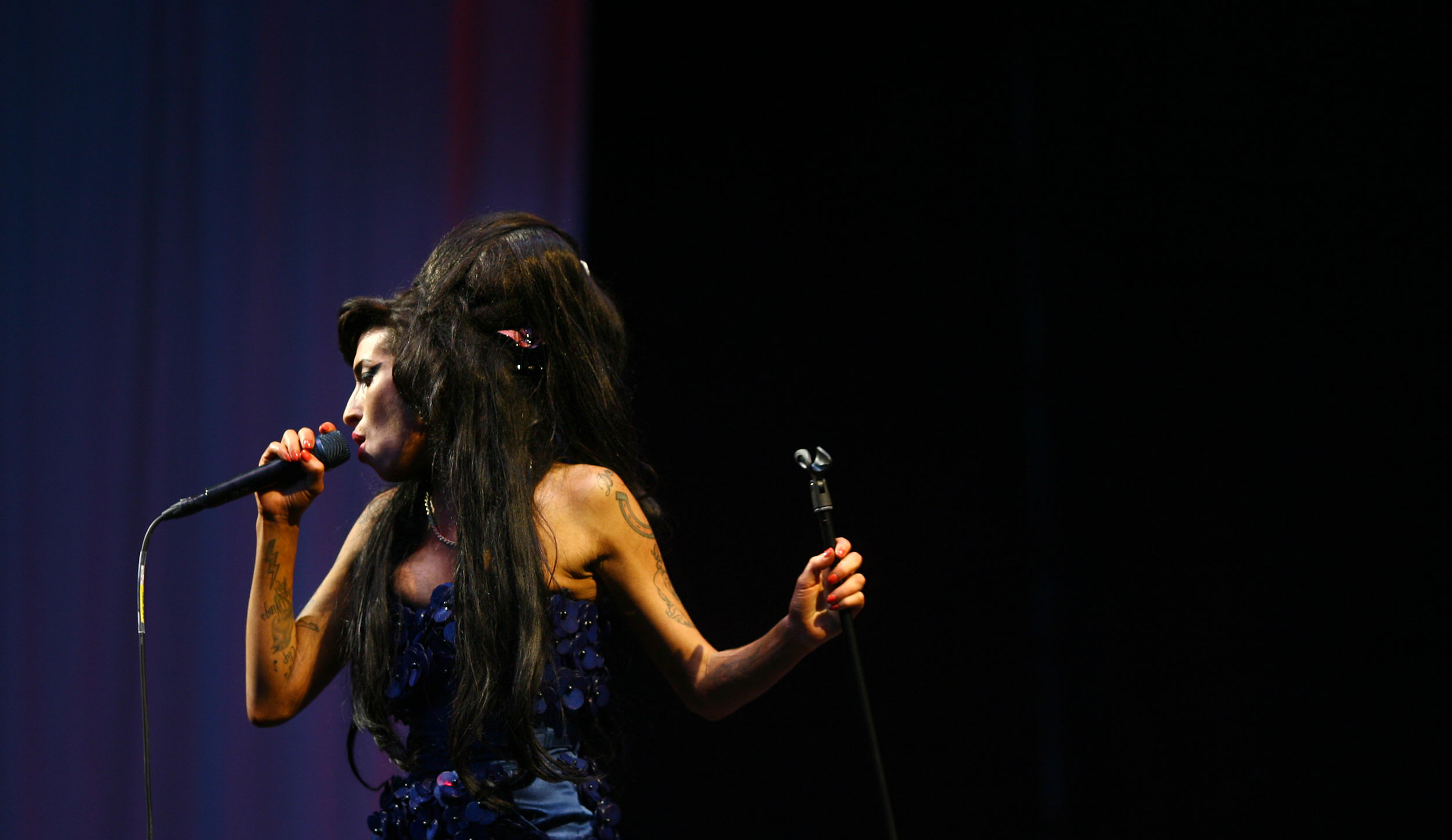Amy starts in 1998 with a joyful event: a friend’s fourteenth birthday. The shaky camera work and slightly muffled microphone sounds of Lauren Gilbert—the birthday girl tasked with capturing this soon-to-be classic moment within her own life—set the scene as the camera pans over girls licking lollipops and sending well wishes to their now slightly older friend. Giggles erupt from behind the camcorder while her mates try to get through “Happy Birthday to You,” but there’s one cheeky girl who hams up her jazzy rendition of the celebratory standard for the camera. That playful girl is Amy Winehouse.
For the next two hours, BAFTA Award-winning director Asif Kapadia and producer James Gay-Rees—the team behind Senna—dive deep into Winehouse’s life and career to try to decipher how this happy-go-lucky girl from Southgate turned into a musical dynamo, only to be found dead at twenty-seven.
After showing Winehouse serenading her tween friends, Amy travels back in time to the soul and jazz singer’s painful childhood. When she was nine years old, her father, Mitch, walked out on the family. In his absence, Winehouse bounced around from man to man , looking for a father figure to protect her and help her navigate the real world. While her first manager, Nick Shymansky, tried to fill that role for the young singer, her vast feeling of abandonment was much too large for him to handle, especially as Winehouse started to dull the pain with drinking. Right around the time that Shymansky enlisted Amy’s friends to help convince her to go to rehab, Mitch reappeared in her life.
The scenes in which Mitch fully ingrains himself into Winehouse’s chaotic-but-lucrative life for his own personal gain—including when he crashes her detox vacation with his reality show film crew to get exclusive footage of his recovering daughter—are more than just heartbreaking. Because you already know how the film ends. You’re watching as this woman with a gorgeous voice and delicate soul slowly dies.
It’s easy to find these jokes depressing now, but the public’s gleeful obsession with women who are perceived to be “hot messes” hasn’t subsided, even after Winehouse’s death.
This sense of helplessness is only compounded when Amy turns the lens onto the public’s insatiable addiction to tabloid fodder. As Winehouse slides deeper into drug addiction and her bulimia worsens, the film peppers in late-night talk show jabs at the singer’s expense along with clips of her smoking crack and struggling to get through recording sessions. It’s easy to find these jokes depressing now, but the public’s gleeful obsession with women who are perceived to be “hot messes” hasn’t subsided, even after Winehouse’s death.
While Amy allows its viewers to ultimately decide who or what is to blame for Winehouse’s passing, it unfortunately benefits from one of the possible causes—paparazzi photos and videos. The film is most effective in helping us understand the crippling and overwhelming anxiety triggered by fame when it shows Winehouse being constantly bombarded by fans and cameras. The sound of people yelping and the blinding flashbulbs are absolutely disorienting, but this powerful footage wouldn’t exist without the paparazzi itself. How can we fully champion this finished product that freely—albeit effectively—uses footage that partially drove Winehouse into the arms of her demons?
Amy’s use of paparazzi footage does succeed in showing audiences an exclusive side of Winehouse and the distresses of her day-to-day life, but its inclusion perpetuates the belief that this intrusive industry is necessary.
The invasive nature of the paparazzi plagued Winehouse’s existence, but it’s this gray area of morality that always colors documentaries promising “revealing looks” at beloved, yet haunted, public figures. We want to understand how the mind of a genius works, but this knowledge comes with a price—the subject’s privacy. Kurt Cobain: Montage of Heck, the recent HBO documentary about the Nirvana frontman, freely uses Cobain’s private journals to shed light on his internal struggles and dark artistic sensibilities. He didn’t intend for those notes and scribbles to be broadcast to the world, but we do learn more about Cobain through his own words. Amy’s use of private home movies and voicemail messages generally follows this same roundabout industry reasoning, but the documentary’s inclusion of paparazzi footage takes Winehouse’s story out of her hands, leaving her legacy helpless in the face of other people’s depictions.
It hurts to watch Winehouse internalize her two-dimensional caricature crafted by these such less-than-savory publications; she ultimately became a self-fulfilling prophecy at the hands of the dark side of public life. Amy’s use of paparazzi footage does succeed in showing audiences an exclusive side of Winehouse and the distresses of her day-to-day life, but its inclusion perpetuates the belief that this intrusive industry is necessary. Without the paparazzi shots, there’s no Amy, but without the paparazzi’s stranglehold on the entertainment industry, one can make the case that there might still be an Amy Winehouse.
As Amy ends, with news footage of Winehouse’s body being loaded into an ambulance and shots of loved ones grieving at her funeral, it’s hard not to feel something more than just the pure sadness at the loss of a once-in-a-lifetime talent. There’s a sick feeling of complicity that comes with knowing her death could have been prevented. Winehouse’s addictive personality was palpable—she would light up a room with just her presence and could connect with everyone in it through her warm voice and honest lyrics—but that charm didn’t come as easily once her demons started to eat away at her. We were just too enthralled to know when to stop our craving for the drama that was drowning her. FL







